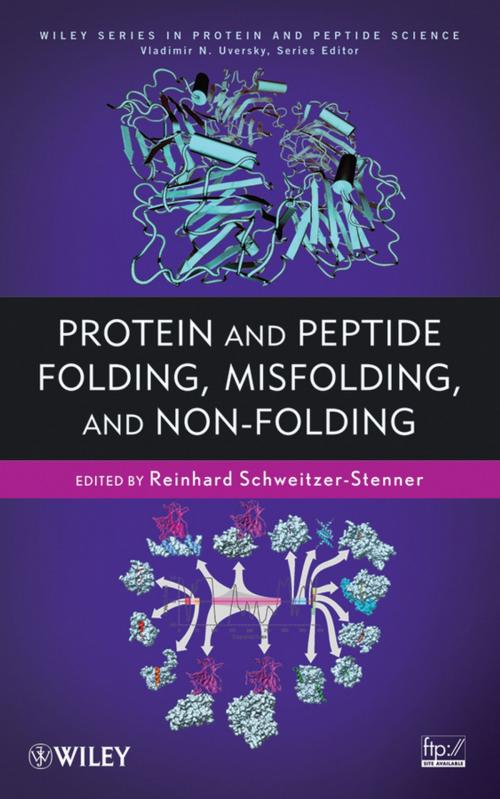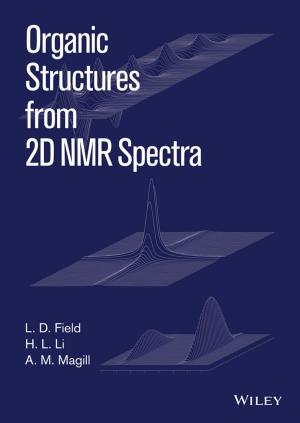Protein and Peptide Folding, Misfolding, and Non-Folding
Nonfiction, Science & Nature, Science, Other Sciences, Molecular Biology| Author: | Vladimir Uversky | ISBN: | 9781118183359 |
| Publisher: | Wiley | Publication: | February 8, 2012 |
| Imprint: | Wiley | Language: | English |
| Author: | Vladimir Uversky |
| ISBN: | 9781118183359 |
| Publisher: | Wiley |
| Publication: | February 8, 2012 |
| Imprint: | Wiley |
| Language: | English |
Sheds new light on intrinsically disordered proteins and peptides, including their role in neurodegenerative diseases
With the discovery of intrinsically disordered proteins and peptides (IDPs), researchers realized that proteins do not necessarily adopt a well defined secondary and tertiary structure in order to perform biological functions. In fact, IDPs play biologically relevant roles, acting as inhibitors, scavengers, and even facilitating DNA/RNA-protein interactions. Due to their propensity for self-aggregation and fibril formation, some IDPs are involved in neurodegenerative diseases such as Parkinson's and Alzheimer's.
With contributions from leading researchers, this text reviews the most recent studies, encapsulating our understanding of IDPs. The authors explain how the growing body of IDP research is building our knowledge of the folding process, the binding of ligands to receptor molecules, and peptide self-aggregation. Readers will discover a variety of experimental, theoretical, and computational approaches used to better understand the properties and function of IDPs. Moreover, they'll discover the role of IDPs in human disease and as drug targets.
Protein and Peptide Folding, Misfolding, and Non-Folding begins with an introduction that explains why research on IDPs has significantly expanded in the past few years. Next, the book is divided into three sections:
- Conformational Analysis of Unfolded States
- Disordered Peptides and Molecular Recognition
- Aggregation of Disordered Peptides
Throughout the book, detailed figures help readers understand the structure, properties, and function of IDPs. References at the end of each chapter serve as a gateway to the growing body of literature in the field.
With the publication of Protein and Peptide Folding, Misfolding, and Non-Folding, researchers now have a single place to discover IDPs, their diverse biological functions, and the many disciplines that have contributed to our evolving understanding of them.
Sheds new light on intrinsically disordered proteins and peptides, including their role in neurodegenerative diseases
With the discovery of intrinsically disordered proteins and peptides (IDPs), researchers realized that proteins do not necessarily adopt a well defined secondary and tertiary structure in order to perform biological functions. In fact, IDPs play biologically relevant roles, acting as inhibitors, scavengers, and even facilitating DNA/RNA-protein interactions. Due to their propensity for self-aggregation and fibril formation, some IDPs are involved in neurodegenerative diseases such as Parkinson's and Alzheimer's.
With contributions from leading researchers, this text reviews the most recent studies, encapsulating our understanding of IDPs. The authors explain how the growing body of IDP research is building our knowledge of the folding process, the binding of ligands to receptor molecules, and peptide self-aggregation. Readers will discover a variety of experimental, theoretical, and computational approaches used to better understand the properties and function of IDPs. Moreover, they'll discover the role of IDPs in human disease and as drug targets.
Protein and Peptide Folding, Misfolding, and Non-Folding begins with an introduction that explains why research on IDPs has significantly expanded in the past few years. Next, the book is divided into three sections:
- Conformational Analysis of Unfolded States
- Disordered Peptides and Molecular Recognition
- Aggregation of Disordered Peptides
Throughout the book, detailed figures help readers understand the structure, properties, and function of IDPs. References at the end of each chapter serve as a gateway to the growing body of literature in the field.
With the publication of Protein and Peptide Folding, Misfolding, and Non-Folding, researchers now have a single place to discover IDPs, their diverse biological functions, and the many disciplines that have contributed to our evolving understanding of them.















